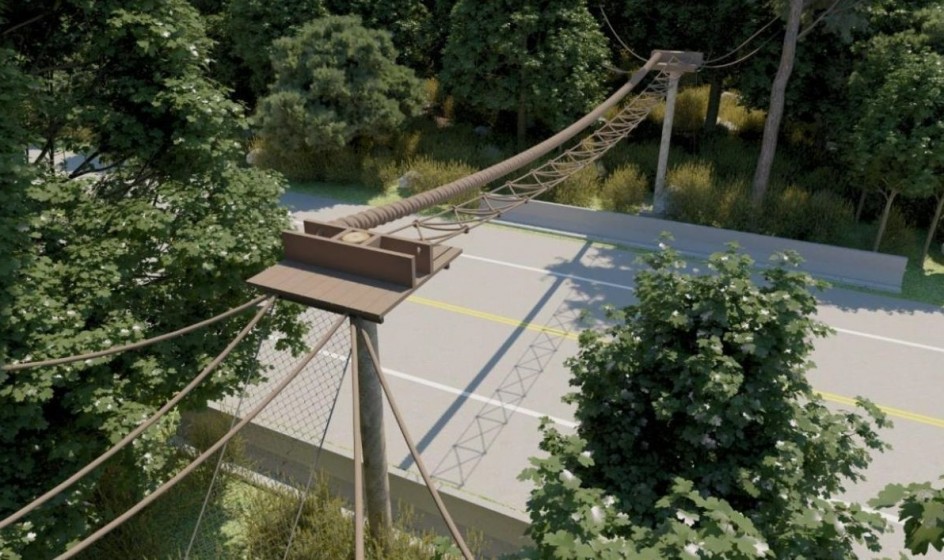

Canopy bridges
The loss of connectivity between habitat fragments bisected by roads not only causes road kills, but also reduces movement of animals, reduces gene flow, and leads to regional population decline. In the Neotropics, most arboreal species are strictly arboreal, rarely if ever coming down to the ground, making them particularly sensitive to habitat fragmentation when canopy connectivity is lost.
Canopy bridges, natural (i.e. tree branches) or artificial ones, have proven to be an effective method to mitigate this form of forest fragmentation, but given the paucity of studies of bridges, there remains much to be learned about their effectiveness in impact mitigation and design preferences across species.
This project aims to create and monitor 30 artificial canopy bridges of two different designs along Highway BR-174 in the states of Amazonas and Roraima in Brazil. One design is unidimensional and composed of a single large rope, and the second design is a two-dimensional rope lattice. The bridges will be installed in pairs at 15 locations. The bridges will be monitored with camera traps over 12 months to evaluate bridge use by different species, particularly the Endangered Guiana spider monkey (Ateles paniscus). These data will inform impact reduction plans that can be incorporated into legislation in Brazil and other countries with strictly arboreal mammal populations.
Project information
Region: Brazil
Implementing partner: Smithsonian National Zoo and Conservation Biology Institute, Center for Conservation and Sustainability, USA
Duration: January 2022 - January 2023
Project goals
- To understand and evaluate the effect of canopy bridges on rainforest habitat connectivity for different arboreal species in the states of Amazonas and Roraima in Brazil
- Training of Environmental and Transportation Agencies in canopy bridge building
Planned activities
- Estimation of road mortalities for different species prior to canopy bridge building
- To build two designs of canopy bridges in 15 locations and evaluate their use by different species
- To give training workshops to Environmental and Transportation Agencies in canopy bridge building